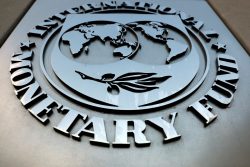President Obama visited Mexico and Costa Rica last week, and in Costa Rica had a meeting with the leaders of Central America, indicating the emerging priorities of his second term as far as that geopolitical arena is concerned. Of specific interest to us in Caricom will have been first, the presence at the meeting in Costa Rica of the Prime Minister of Belize, a country which, in addition to holding membership in Caricom, is also a member of the Central American Integration System (SICA). And secondly, the presence of the Dominican Republic, a member of our Cariforum relationship with the European Union, under the Economic Partnership Agreement.
All accounts of the discussions with the new President of Mexico, Enrique Peña Nieto, suggest that while Mr Obama and his team paid significant attention to the question of the movement of narcotics from Mexico northwards to the United States, and from Mexico southwards to the Central American states as alternative channels to the North American mainland, he seemed to want to place almost equal, if not more, emphasis on the US’s trade and economic relationship with Mexico within the framework of the North American Free Trade Area (NAFTA).
Clearly the President feels, and indeed indicated as much, that while the narcotics issue, in terms of its being a major security, as well as a health and wellness issue, remains a significant priority, it must now rank with the significance that the US attributes to the further development of Mexico in particular, as part of the NAFTA. This sentiment also would appear to correspond firstly, to the views of the Mexican President who, both in his party’s election campaign and on his ascent to office, has emphasized the importance of taking Mexico to a new level of economic growth, placing the country on par with a country like Brazil in the Latin American arena.
Secondly Peña Nieto’s statements on narcotics and related security issues in which the US has played a strong hand vis-à-vis Mexico over the last decade, also suggest that he would wish to demonstrate that in the course of cooperation with the US, a Mexican government must not appear to be subordinate to American strategies.
A part of the American president’s message has also been that he recognizes the changing balance of economic power in the world, and the importance of sustaining the linkages of his country with others, in particular Mexico next door, that can enhance the United States’ leadership and dominance of markets in the global economy, starting with the hemisphere of which the US is a part and, in effect, leader. So the President, well aware of the challenge from the East, has sought to remind the Mexicans that “the United States and Mexico have one of the largest economic relationships in the world, and that Mexico is the second largest market for United States exports.” And, as he put it, the US and Mexico have at this time “an historic opportunity to foster even more cooperation, more trade, more jobs on both sides of the border.”
Clearly, the United States President is seeking to consolidate the NAFTA base that his country had originated, and to ensure the hemispheric arena as a first base of American prosperity and underpinning of his country’s home ground. And in turn, President Peña Nieto, obviously perceives the strength of its inescapable next door neighbour, and the NAFTA relationship, as a significant base for his own country’s continuing economic expansion and ability to influence events in the hemisphere.
Further, Peña Nieto must see the relationship, properly sustained from his Mexican end, as a leg on which it can stand in terms of extending Mexico’s prominence and influence in South America. Mexico’s initiation of the Community of Latin American and Caribbean States (CELAC), as a foundation of future influence as other Latin American states, in particular Brazil, foray out into the wider economic world, has been yet another example of the country’s search for a substantial role in fashioning hemispheric relations in their interconnections with the wider world. This action is therefore, in a sense complementary to Mexico’s recent hosting, the first for a Latin American country, of the G20 in June last year.
The President’s visit to Costa Rica, and his meeting with the Central American leaders, indicates the prominence which the United States gives, not only to that country which is in the forefront of economic development in Central America, but also to what is deemed to be the success, so far, of the US-Central American Free Trade Area (including the Dominican Republic).
In the words of the American President, “Costa Rica shows the benefits of trade that is free and fair,” since under the US-DR-CAFTA, United States “trade with Costa Rica has doubled.” And, no doubt the following words will have been said by him with deliberation: “although I understand why there’s been a great focus over the last several years on security issues… there’s been a lot of emphasis on immigration… we shouldn’t lose sight of the critical importance of trade and commerce and business to the prospects both for Costa Rica, the United States, and the entire hemisphere.”
As Prime Minister Barrow of Belize and Caricom, will have heard these words, it would be interesting to know what thoughts he had on the apparently tortuous discussions going on between Caricom and the United States (where security apparently still holds pride of place over trade), and between Caricom and Canada, as the North-Middle American arena consolidates itself in this era of emerging hemispheric economic giants.








